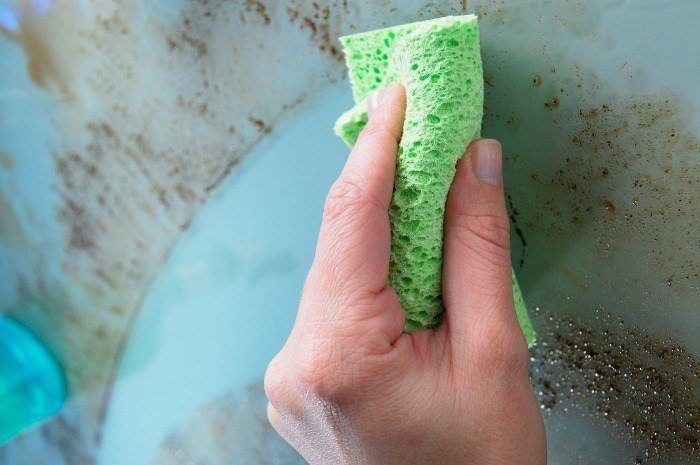This Is The Dirtiest Thing In Your Kitchen
The dirtiest item in your house isn't the trash can or the toilet seat or the floor— it's the sponge in your kitchen sink. Ironically, the main tool used to clean the kitchen is almost certainly spreading bacteria around even as it appears to be mopping things up. Every time you use a sponge to wipe down a dirty plate, cutting board, or countertop, the bacterial remnants of what you're cleaning off get lodged into the pores of the sponge.
A study out of the University of Arizona found that a kitchen sponge is so covered in bacteria that it could actually be as much as 200,000 times dirtier than a toilet seat. Dr. Charles Gerba, a professor of microbiology and expert in the transmission of pathogens through water and food, says that the smooth, cold surface of the toilet seat is less conducive to mold growth than the warm, damp surface of the sponge.
When you think about it, it's not so hard to believe that the sponge is the dirtiest item in your house. Using a sponge to scrub down a cutting board that had recently been coated with raw meat or poultry can contaminate it with dangerous bacteria like salmonella and E. coli. A study conducted by Gerba of 1,000 used kitchen sponges and dish towels found that as many as 10 percent of them contained salmonella, and though soap and water might remove grime and leftover food, this combination doesn't necessarily kill the bacteria. In fact, water needs to be at least 140 degrees Fahrenheit to be effective at killing germs. Therefore, scrubbing a plate with a dirty sponge is essentially transferring all the bacteria from countertops, cutting boards, floors, tables, and sinks right back onto the dishes.
Fortunately, there are proven ways to effectively clean your sponges. The United States Department of Agriculture tested four different methods and found that either microwaving a sponge for one minute and running it through the dishwasher killed 99.999 percent of bacteria.
